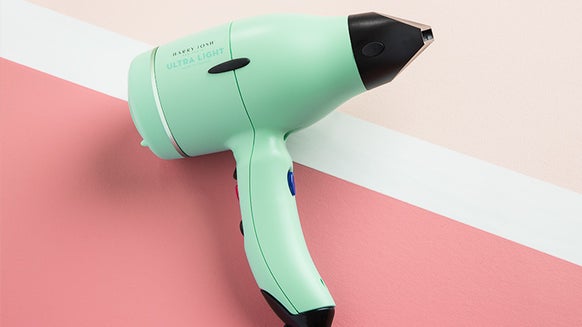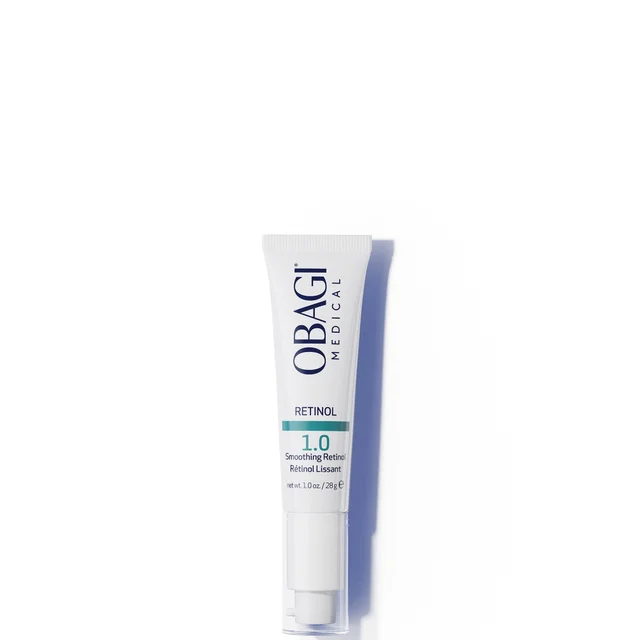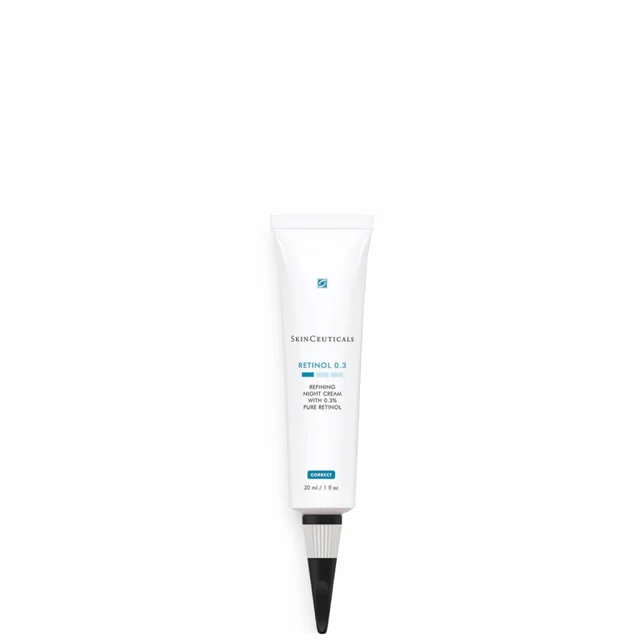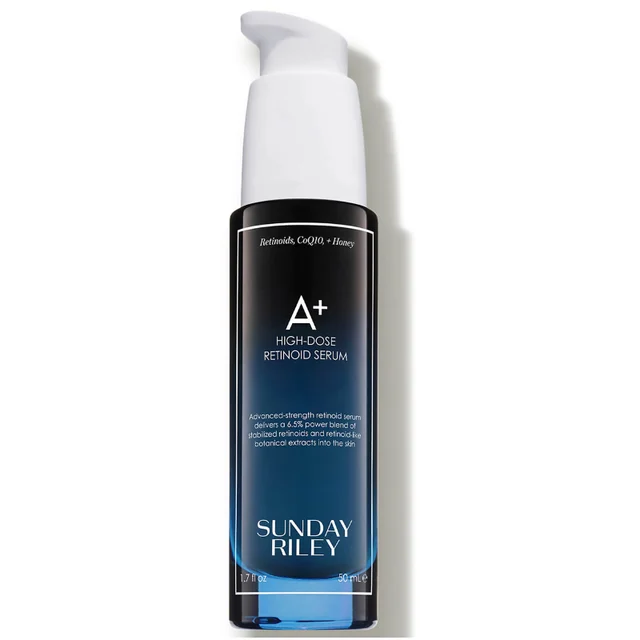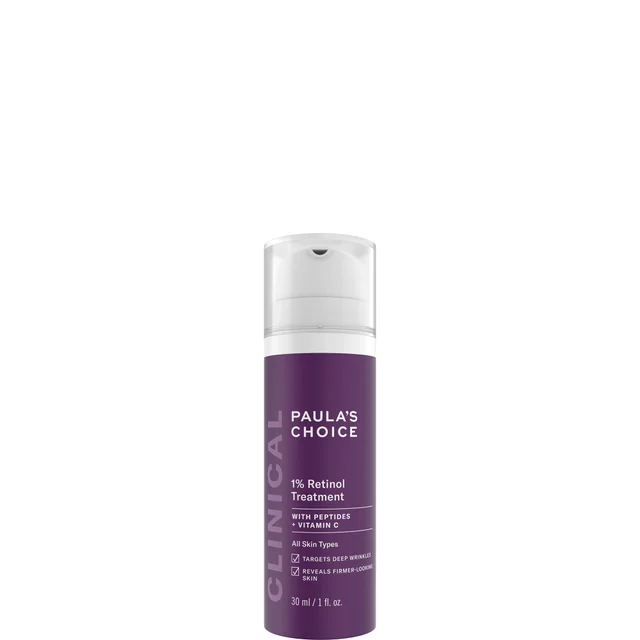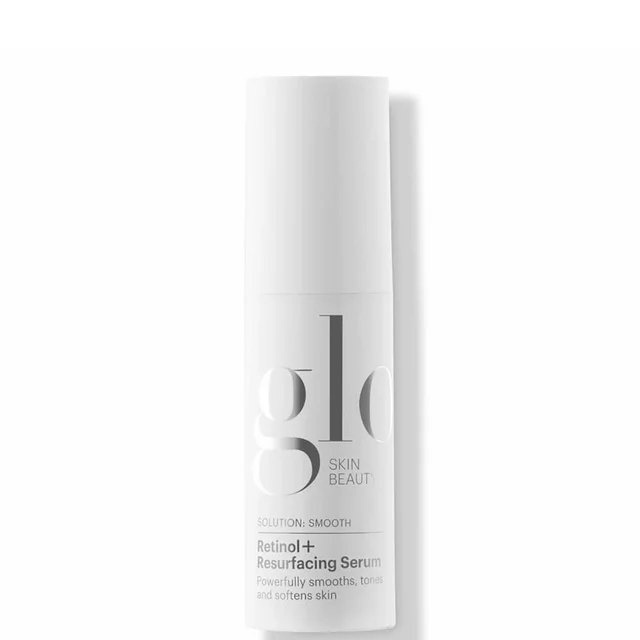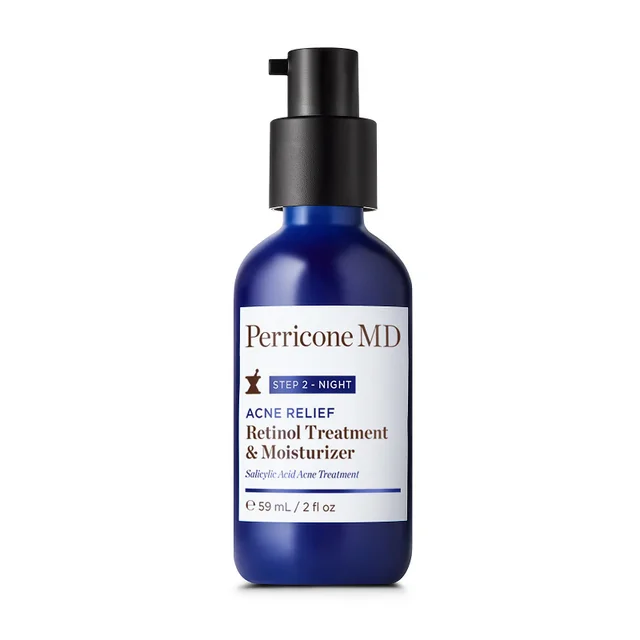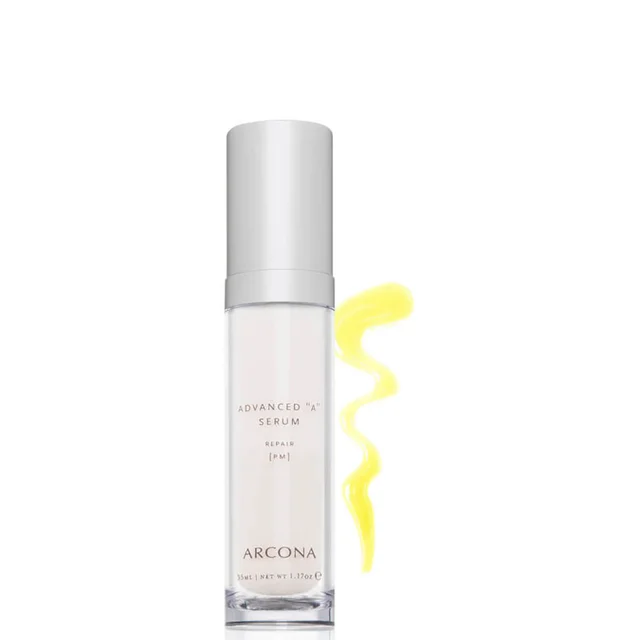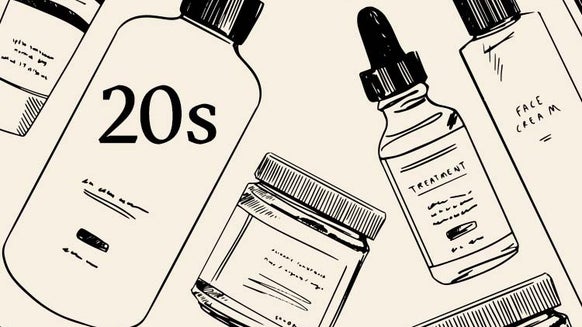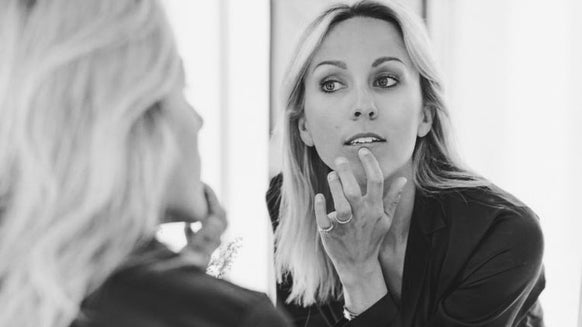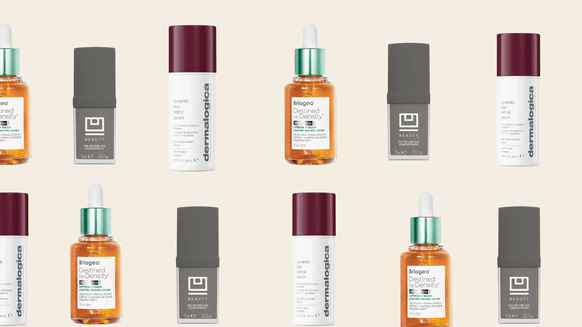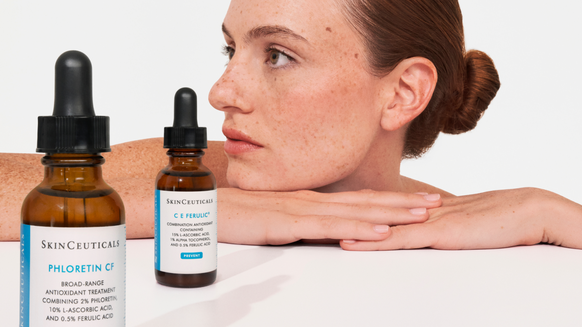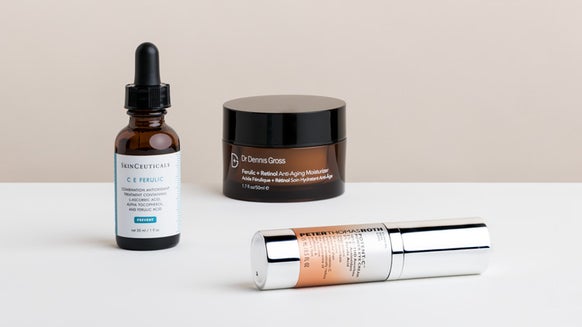Unlocking Clear Skin: How to Use Retinol for Acne
Few other ingredients can stand toe-to-toe with the proven wonders of retinol. As an anti-aging hero, it’s probably the closest we’ll ever get to youth in a bottle. But fading wrinkles and fine lines is just the beginning with retinol. The true multitasker that it is, retinol for acne is one of the most derm-recommended solutions in tackling stubborn blemishes, clogged pores, and post-acne scars.
But how exactly does it work, and how do you add it to your skincare routine? Keep reading for a full expert-approved breakdown on how to use retinol for clearer, breakout-free skin.
Meet the Expert
- Dr. Ashley Magovern – Board-certified dermatologist and member of Dermstore’s Medical Advisory Board
What is Retinol
Retinol is a fat-soluble substance that’s part of a group of vitamin A-derived compounds called retinoids. “It’s one of the most studied ingredients in dermatology,” says Dr. Ashley Magovern, board-certified dermatologist and member of Dermstore’s Medical Advisory Board. “It boosts skin cell turnover, unclogs pores, stimulates collagen, and helps even out skin tone.”
As one of the gentlest retinoids, retinol is an essential ingredient in many skincare products. It also comes in various strengths and forms, but unlike its more potent counterparts, retinol treatments are available over the counter. This is why retinol is often the go-to solution of first-time retinoid users and sensitive skin types who are looking to address acne and fade dark spots.
How Does Retinol Work to Treat Acne?
One of the main reasons that make retinol a much sought-after ingredient is its ability to speed up skin cell turnover. It hastens the production of new skin cells and shedding of old ones. This exfoliation effect prevents dead skin cells from clogging pores as well as helps renew the skin’s surface, minimizing marks and blemishes left behind by breakouts, smoothing texture, and evening out tone. “Over time, it helps to minimize both blackheads and inflammatory acne like papules and pustules,” adds Dr. Magovern.
How to Choose the Right Retinol Product
As with any other ingredient, choosing the right retinol for acne formula or product depends on your skin type, tolerance, and the severity of your acne. Over-the-counter retinol is available from 0.1 to 1 percent. And the higher the concentration, the more potent the product is. But while it’s tempting to go for the strongest dose to get results faster, higher isn’t always better—especially if you’ve never been on retinoids before.
The trick, according to Dr. Magovern, is to take things slow. Most first-time users can tolerate 0.25 to 0.5 percent retinol, but if you have sensitive or easily triggered skin, consider going even lower. By starting low, you allow your skin to build tolerance to retinol’s potency and prevent unwanted reactions. After your skin has adjusted, you can gradually increase to higher strengths. Just make sure to beef up your routine with nourishing ingredients like niacinamide and hyaluronic acid to limit potential irritation.
Skincare Ingredients to Pair with Retinol
Retinol is a workhorse ingredient that targets multiple concerns even when used on its own. But as we all know by now, a well-rounded skincare routine is all about ingredient synergy. While retinol can do plenty of things on its own, it shines more when paired with nourishing and moisture-boosting ingredients. That's because these ingredients can act as buffers that minimize the risk of irritation typically associated with retinol. According to Dr. Magovern, these ingredients include:
Niacinamide : Helps calm inflammation and supports the skin barrier. Hyaluronic Acid: Boosts hydration and prevents dryness associated with retinol use. Azelaic Acid: A super gentle exfoliant that can work alongside retinol to target pigmentation and acne without the increased risk of irritation. Ceramides: Reduces sensitivity and reinforces the skin barrier, making sure it doesn’t get overwhelmed by heavy-hitting ingredients like retinol.
But because retinol—and retinoids, in general—is highly potent, it doesn’t always play well with other active ingredients. In particular, if you’re using retinol for acne, steer clear of combining it with other acne treatments in the same routine. “Avoid layering retinol with benzoyl peroxide, alpha hydroxy acids (AHAs), and beta hydroxy acids (BHAs) at the same time as they may increase irritation,” says Dr. Magovern.
Don’t want to give up one for the other? Space them out in your routine instead. This workaround means using them on alternate days or applying one in the morning and retinol at night. But if you’d rather stick to one product that does it all, you’re in luck. Skincare science has come a long way, and some brands have figured out how to combine retinol with ingredients it was once never mixed with, such as vitamin C and even salicylic acid.
Does Retinol Help with Acne Scars?
Retinol increases both the production of collagen and the speed of cell turnover. Not only does this maintain the skin’s youthful appearance, but it also addresses texture and discoloration concerns with consistent use. “Retinol encourages collagen production, which helps fade post-inflammatory hyperpigmentation and mild acne scarring. It improves overall skin texture and promotes even tone,” explains Dr. Magovern.
Potential Side Effects of Using Retinol for Acne
Retinol is a clinically proven ingredient with a solid safety record. It is also one of the most intimidating and misunderstood. That is largely because retinol is well-known for its side effects, particularly when using it for the first time. However, it’s important to remember that while retinol-associated reactions are real, they are temporary and all part of the process.
For some new users, retinol can cause drying, redness, flaking, and irritation, also referred to as retinization. This typically occurs during the skin’s adjustment period, a sign that it’s in the process of getting used to retinol. “These are usually manageable with a slow introduction [to retinol], two to three nights per week, and supportive products like barrier creams,” says Dr. Magovern.
The good news? Retinization typically resolves in two to six weeks, which is about the same time it takes for your skin to fully acclimate to the ingredient and begin showing noticeable improvements.
Best Retinol for Acne
1. Peter Thomas Roth Goodbye Acne Treatment Gel
Key Ingredients: Salicylic Acid 2%, Oligopeptide-10 Complex 5%, Time-Released Microencapsulated Retinol and Vitamin C 1%
Skin Type: All skin types
Skin Benefit(s): Clears up acne and prevents future breakouts, unclogs and blurs enlarged pores, potent without being irritating
Beauty Insider Tip: Spot-treat the affected skin with a thin layer of the gel one to three times daily or as often as needed.
2. Natura Bisse Essential Shock Intense Retinol Fluid
Getting hit with a one-two punch of post-acne marks and lackluster skin? Ideal for refining fine lines, wrinkles, and blemishes, this ultra-luxe retinol fluid revitalizes and renews the skin to look softer, smoother, and more radiant.
Key Ingredients: Retinol, Shea Butter
Skin Type: All skin types
Skin Benefit(s): Minimizes pores and blemishes, reduces fine lines and wrinkles
Beauty Insider Tip: Use every morning and night, after cleansing and toning, for visibly brighter, clearer, and younger-looking skin.
3. StriVectin Super-C Retinol Brighten & Correct Vitamin C Serum
Think of this supercharged serum as the ultimate solution to skin that’s coping with post-acne marks and blemishes. With its innovative formula that blends retinol and brightening powerhouse vitamin C, this serum tackles hyperpigmentation and discoloration while visibly renewing your complexion and improving glow.
Key Ingredients: Vitamin C, Acerola Cherry Extract, Retinol (NIA-114TM), Niacinamide
Skin Type: All skin types
Skin Benefit(s): Brightens and visibly firms skin, smooths lines and wrinkles, improves texture and radiance
Beauty Insider Tip: Use in your morning and evening routine, and make sure to layer a hydrating moisturizer on top.
4. iS Clinical Retinol+ Emulsion 0.3
Your first retinol product can set the tone of the rest of your retinoid journey. This fast-acting retinol emulsion makes sure you get the best start with its potent yet gentle formula that resurfaces the skin, targets breakouts, and addresses fine lines and deep wrinkles without excessive dryness and irritation.
Key Ingredients: Retinol, Bakuchiol, Extremozymes®, Sodium Hyaluronate, Antioxidants
Skin Type: All skin types
Skin Benefit(s): Blurs fine lines and deep wrinkles, smooths tone and texture, improves radiance, gentle and nourishing
Beauty Insider Tip: Ease your way into retinol by using this product every three days for three weeks, before increasing it to every two days or as tolerated by your skin.
5. SkinMedica Age Defense Retinol Complex 1.0
Opt for this high-strength retinol complex if you’re a seasoned retinol user that needs a dependable ally in battling breakouts, acne scars, age spots, and wrinkles. Also infused with nourishing and barrier-supporting ingredients, this potent formula works extra while going easy on your skin.
Key Ingredients: Retinol, PhytoShield™ Complex, Ceramides, Niacinamide, Peptides
Skin Type: All skin types
Skin Benefit(s): Minimizes stubborn lines and coarse wrinkles, blurs and refines pores, improves tone and texture, fades dark spots and discoloration
Beauty Insider Tip:If you experience mild redness, peeling, and irritation when using this product, don’t fret. Trust the process, start slow, and watch it transform your skin in a few weeks’ time.
6. SkinMedica Age Defense Retinol Complex 1.0
Blur fine lines and fade discoloration with this powerhouse anti-aging cream. Boasting of the highest concentration of retinol and botanical extracts, it delivers serious skin-smoothing properties to fade post-acne blemishes, refine pores, and prevent future breakouts—all while also making sure to keep your skin looking younger, brighter, and healthier.
Key Ingredients: 1.0% Retinol, Soothing Complex (Bisabolol, Chamomile, Frankincense), Ceramides, Antioxidants
Skin Type: All skin types
Skin Benefit(s): Diminishes the look of fine lines, wrinkles, and discoloration; refines pores and post-acne blemishes; minimizes retinol-related irritation; non-comedogenic
Beauty Insider Tip: This night cream is best for experienced users with skin that’s already pre-conditioned with medium-strength retinol.
7. PCA SKIN Intensive Clarity Treatment 0.5 Pure Retinol Night
A brightening and acne treatment in one, this skin-clarifying nighttime treatment blends retinol with salicylic acid to banish existing breakouts while refining skin texture, toning down oil production, and decongesting and tightening pores.
Key Ingredients: Retinol, Salicylic Acid, Witch Hazel
Skin Type: Acne-Prone, Oily, Combination, Normal
Skin Benefit(s): Clears acne and prevents new ones from forming, calms and reduces inflammation, promotes even tone and texture
Beauty Insider Tip:Start with one to two nights a week application to prevent irritation and over-drying. Then, increase frequency to every other night, then nightly, or as tolerated by your skin.
FAQs
Which is better for acne, salicylic acid or retinol?
That depends on what your goal is. If you have an active breakout you want to get rid of right away, go for salicylic acid. If you're looking to boost your skin's resilience against acne, that's what retinol is for. "Salicylic acid is better for unclogging pores and controlling oil in the short term, while retinol addresses acne more comprehensively over time by improving skin cell turnover and texture. They work well together when used strategically," says Dr. Magovern.
Can using retinol for acne cause skin purging?
Aside from retinization, retinol can also cause purging due to the increased cell turnover. This causes gunk from congested pores and beneath-the-surface breakouts to be pushed to the surface more quickly, making it appear as if your breakout is worsening. “This phase usually lasts a few weeks and is temporary. Don’t stop your retinol!” says Dr. Magovern.
How long does retinol take to get rid of acne?
As effective as retinol is in targeting acne and signs of aging, it’s not magic. “Expect to see improvements in six to 12 weeks,” says Dr. Magovern. “Skin purging may occur in the first few weeks as pores clear out. This is normal. Stick with it—consistency is key.”
Does retinol help with dark spots?
You bet, says Dr. Magovern. Retinol’s ability to increase cell turnover and collagen production renews and brightens the skin’s surface, helping fade dark spots, post-acne marks, and hyperpigmentation over time.
Can you put retinol on popped pimple?
No—and you shouldn’t be popping or picking at your pimple. Ever. In any case, you shouldn’t apply retinol on broken or inflamed skin, says Dr. Magovern. “It can worsen irritation and delay healing. Instead, use a soothing spot treatment with ingredients like salicylic acid, sulfur, or benzoyl peroxide.”
The Bottom Line

Janeca Racho is a Journalism graduate with over 15 years of writing experience. After getting her start in public relations and advertising, she made the switch to freelance writing and began working for various lifestyle, fashion, and travel brands. Her love for all things skincare has led her to beauty reporting and research for the last ten years. Writing for several hair and beauty blogs, she reports on anti-aging staples, trending brands and products, must-have ingredients, and health and wellness.
Related Posts
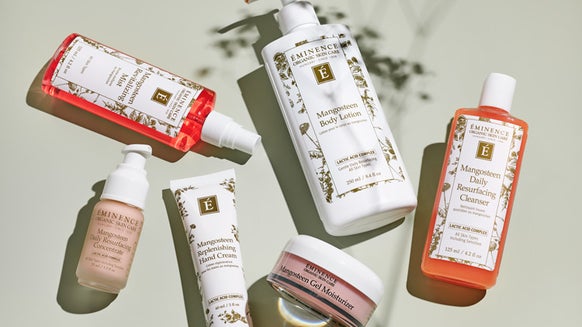
Mangosteen Is the Latest Superfood in Eminence Organics’ Line, Here’s Why We’re Obsessed
